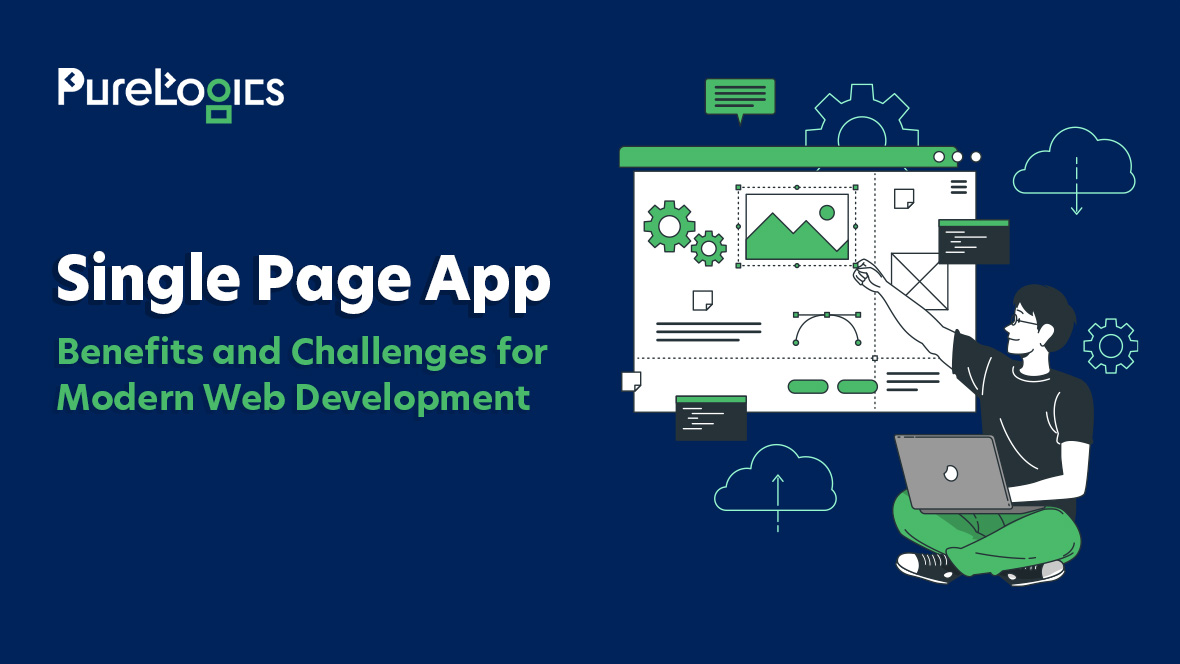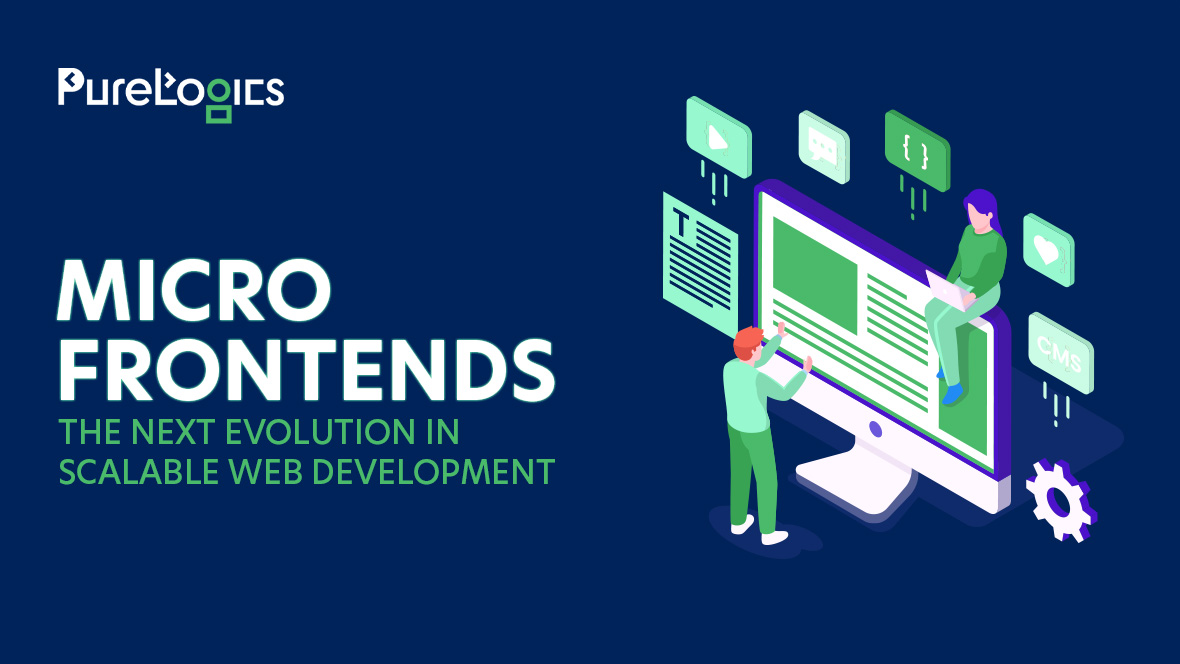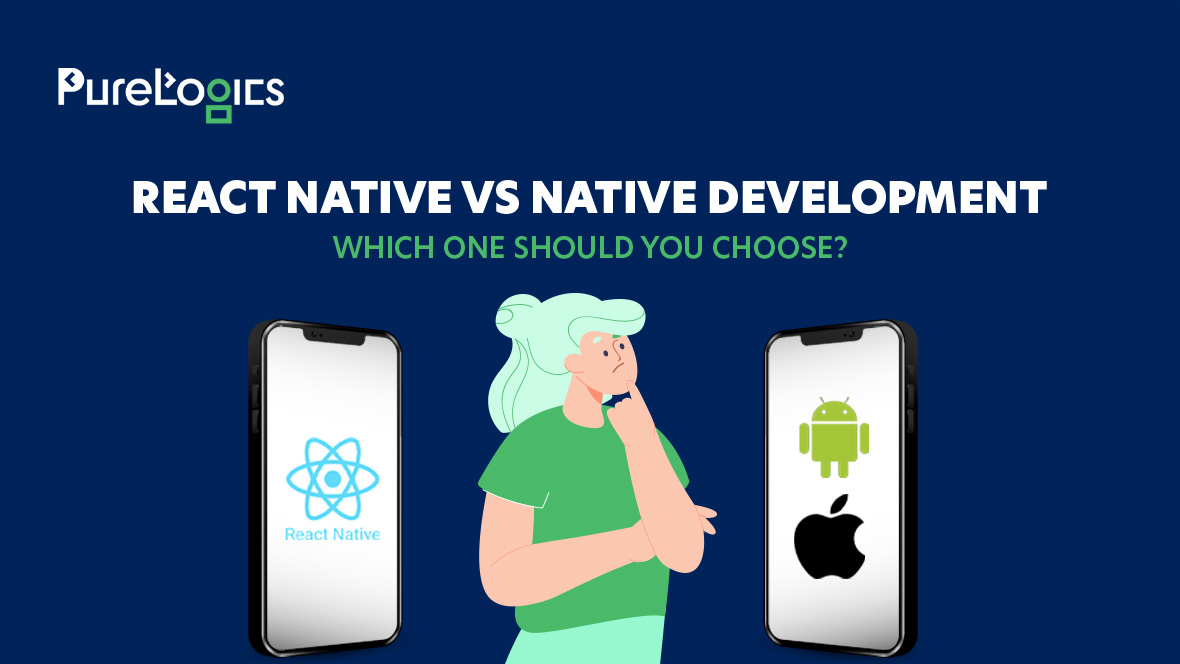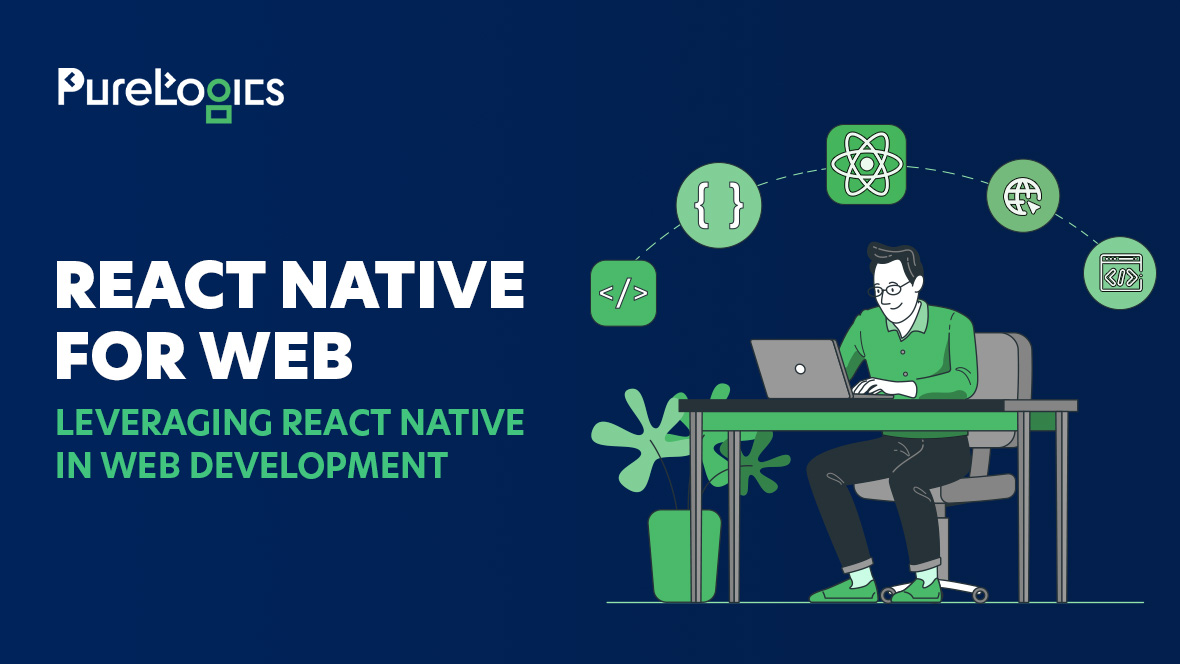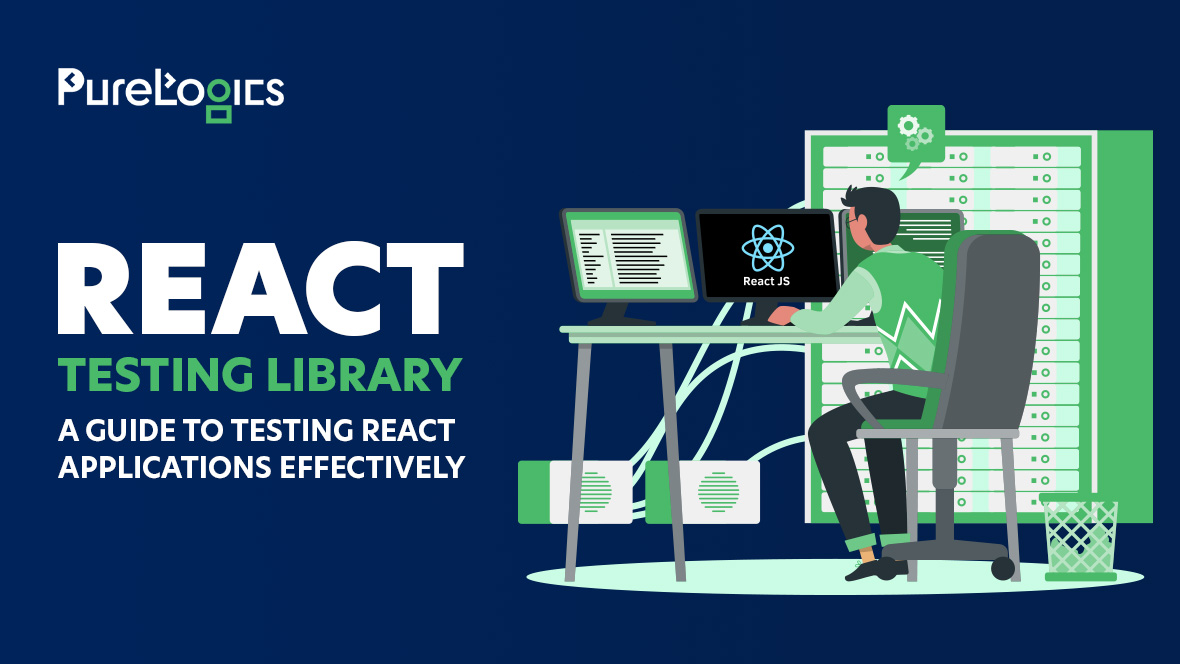Single-page applications (SPAs) have taken the web development world by storm by offering unprecedented performance, responsiveness, and user satisfaction. From Google to PayPal, leading companies are leveraging SPAs to create dynamic and fast-loading web experiences. But are SPAs a universal solution, or do they come with trade-offs?
At PureLogics, we’ve worked extensively with single-page applications. Our top 2% of web developers have helped a long list of businesses develop SPAs that push boundaries, whether by upgrading existing systems or building brand-new ones.
Today’s blog post explores the unique benefits of SPAs for businesses and users and highlights their challenges. Let’s get started!
What is a Single-page Application?
A single-page application (SPA) is a web app that dynamically updates content on a single HTML page, eliminating the need for full-page reloads. Traditional multi-page applications (MPAs) fetch entire new pages from the server for every interaction. However, SPAs load the necessary HTML, CSS, and JavaScript once and rely on APIs to fetch data asynchronously.
SPAs use frameworks like React, Angular, or Vue.js to build fast, interactive user experiences. By offloading much of the work to the client side, SPAs reduce server load and deliver near-instant responsiveness. Undoubtedly, today, SPAs mimic the feel of a native app.
SPAs are used in:
- Social media platforms (e.g., Facebook, Twitter)
- E-commerce websites
- Email clients (e.g., Gmail)
- Project management tools (e.g., Trello, Asana)
- Real-time dashboards
- Online video platforms (e.g., Netflix, YouTube)
- Online learning platforms
Benefits of Single Page Applications for Businesses and Users
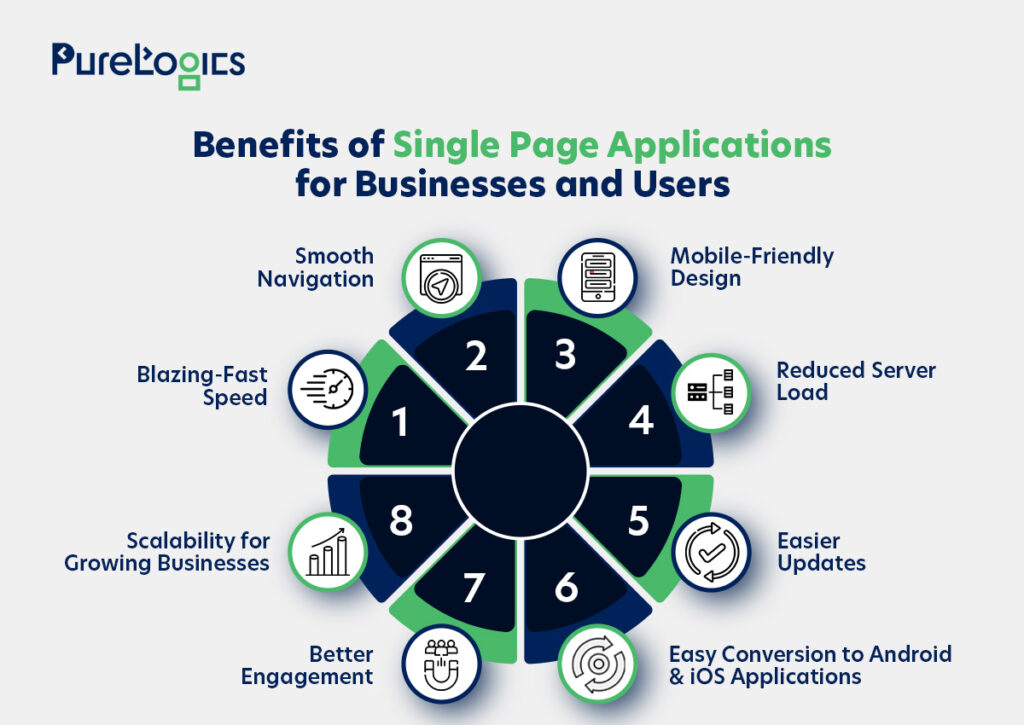
Meta, YouTube, and Netflix have switched from multi-page applications to single-page applications. Here are some key reasons behind their decision to make the switch:
Blazing-Fast Speed
SPAs load everything upfront and only fetch new data when needed. This means users don’t have to wait for full-page reloads. For example, Gmail lets you switch between emails instantly. It saves time and keeps users happy.
Smooth Navigation
With SPAs, users enjoy seamless browsing without interruptions. Apps like Netflix use SPAs to let users scroll through shows or switch pages smoothly. This is how Netflix creates an enjoyable experience.
Mobile-Friendly Design
SPAs are built with responsive frameworks like React and Vue.js. These frameworks ensure that SPAs adapt perfectly to different screen sizes. This makes them ideal for businesses that target mobile users, like Instagram or Twitter.
Reduced Server Load
By handling most tasks on the client side, SPAs minimize server requests. For example, platforms like PayPal use SPAs to ensure quick transactions without overburdening their servers.
Easier Updates
SPAs use one backend for web and mobile apps. This simplifies updates and cuts costs. For example, Trello’s SPA approach ensures consistent performance across devices while making maintenance hassle-free.
Easy Conversion to Android & iOS Applications
Developers aiming to move to iOS and Android apps should consider using SPAs, as they’re easier to convert. The same code can be reused for mobile apps, making the transition smoother.
Better Engagement
Quick responses and smooth transitions keep users hooked. E-commerce sites like Amazon use SPAs to reduce bounce rates and encourage more purchases.
Scalability for Growing Businesses
SPAs are highly scalable. They add new features or modules without disrupting the existing system. For instance, Slack continually evolves its platform while maintaining a consistent experience for users.
Prevailing Challenges of Single Page Applications
SPAs also have a few potential challenges. Let’s dig them out!
SEO Limitations
SPAs often struggle with SEO because search engines rely on server-rendered content. Since SPAs load content dynamically, it can be harder for search engines like Google to index all the information. For example, websites like Airbnb face SEO challenges with their SPA, requiring additional tools like server-side rendering (SSR) to ensure visibility.
Initial Load Time
Although SPAs offer faster interactions after the initial load, the first-page load can be slower. Since all the resources must load upfront, users may experience delays, especially on slower networks. This can affect user retention on apps like e-commerce platforms.
Browser History Management
Handling browser history in SPAs is tricky. As the page doesn’t reload, users might struggle with using the back button properly. This requires additional work to manage routing effectively. A common example is single-page blog sites, where users can’t easily navigate through history without glitches.
Difference between Single-Page Applications and Multi-Page Applications
| Property | Single-page app | Multi-page app |
| Initial load time | ❌ | ✅ |
| Performance (Post load) | ✅ | ❌ |
| User experience | ✅ | ❌ |
| SEO-friendliness | ❌ | ✅ |
| Development complexity | ✅ | ❌ |
| Maintenance | ✅ | ❌ |
| Server load | ❌ | ✅ |
| Offline functionality | ✅ | ❌ |
| Page reloads | ❌ | ✅ |
| Navigation speed | ✅ | ❌ |
| Frameworks used | React, Angular, Vue.js | PHP, ASP.NET, Ruby on Rails |
| Mobile compatibility | ✅ | ❌ |
| Backend & frontend integration | ✅ | ❌ |
| Use case for dynamic content | ✅ | ❌ |
| Handling browser history | ❌ | ✅ |
| Suitability for large websites | ❌ | ✅ |
Final Remarks – Need to Develop a SPA for Your Business?
With mobile usage on the rise, single-page applications are an ideal solution for fast and seamless user experiences. Choosing between SPA and MPA depends on your business needs, and our experts at PureLogics can guide you in making the right decision.
Fill out the form today for a free 30-minute consultation with our developers and analysts.


 [tta_listen_btn]
[tta_listen_btn]
 April 7 2025
April 7 2025

